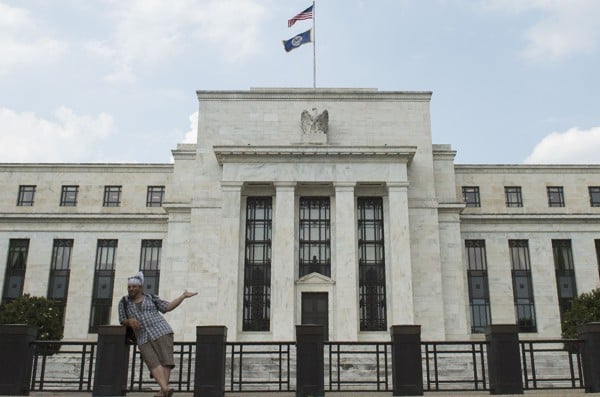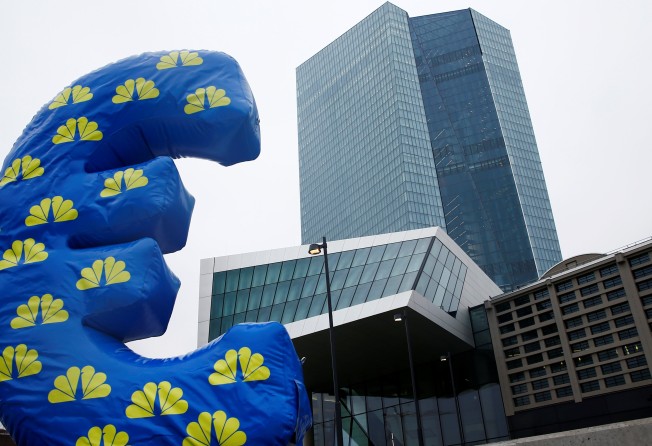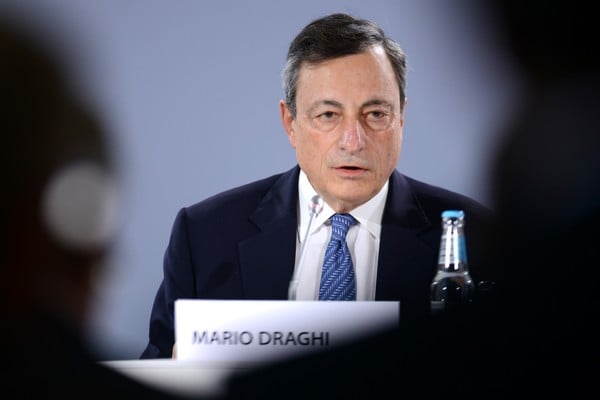
Central banks breed investor optimism and pessimism in equal measure
The Fed has so far managed to tighten policy without spooking investors – but for the ECB and the Bank of Japan, yet to debate tapering, things could prove a lot messier

It‘s the question on the lips of every international investor and fund manager these days: given the plethora of risks facing the global economy, especially those centred around the withdrawal of monetary stimulus by the world’s leading central banks, why are financial markets so tranquil?
On Sunday, the Bank for International Settlements (BIS), the so-called central bankers’ bank, warned in its annual report thatasset prices continue to be heavily distorted by ultra-loose monetary policies and have ceased to be a reliable indicator of systemic risk: “Prices are strongly influenced by central banks, and the views of market participants embedded in them may well be wrong.”

For every major issue confronting investors, there is an optimistic and a pessimistic narrative.
This is not simply a case of the bulls versus the bears.
[asset] Prices are strongly influenced by central banks, and the views of market participants embedded in them may well be wrong
Rather, the polarisation of views stems in large part from the actions of central banks whose policies have significantly increased investors’ appetite for risk over the past several years while at the same time sowing the seeds of a potentially nasty sell-off once QE comes to an end.
For now, the optimistic narrative is holding sway. Yet if monetary stimulus is withdrawn more quickly than investors anticipate, the pessimistic narrative could rapidly gain traction.
Two crucial issues will determine the direction of markets in the second-half of this year and in 2018:
● Bonds versus equities:
The simultaneous rally in equity and bond markets, particularly since the start of this year, has become the focus of attention for investment strategists.
The contrasting messages from the two asset classes – US stocks, which are at record highs, reflect optimism about earnings and growth while bonds reflect increasing pessimism about growth and inflation – have become more pronounced since the Treasury yield curve started flattening again earlier this year, signalling growing economic gloom.

Some investors believe this unprecedented divergence cannot last and is likely to result in a disorderly repricing – either in bonds as the Fed ends up tightening policy more aggressively than markets anticipate, or in stocks as growth expectations are revised down sharply. So why are volatility levels still so low?
Other investors point to different factors keeping bond yields low – notably increased demand for higher-yielding US debt – and take comfort from the fact that the Fed is able to tighten policy under such favourable conditions.
Optimists also stress that the fall in yields stems from the recent decline in inflation as opposed to a collapse in growth. The strong performance of Europe’s economy this year and still fairly decent data out of the US suggests this is indeed the case.
● Central bank communication:
The other big issue for international investors, which was thrown into sharp relief this week by comments from leading policymakers, is the communication skills of central banks as they prepare markets for the withdrawal of stimulus.
On Wednesday, the European Central Bank (ECB) was forced to clarify mildly hawkish comments by president Mario Draghi which markets had interpreted as a signal that the ECB was poised to begin scaling back, or “tapering”, its QE programme. The same day, Bank of England (BoE) governor Mark Carney triggered a sharp rise in the pound when he said he would support a rise in interest rates if Britain’s economy – which has slowed markedly of late – picks up steam.

The hyper-sensitivity of international investors to central bankers’ every utterance – and, more worryingly, their tendency to misinterpret, or read too much into, their comments – is likely to make it extremely difficult for monetary stimulus to be withdrawn without roiling markets.
The Fed has so far managed to tighten policy without spooking investors. Yet for the ECB and the Bank of Japan (BoJ), which have not even begun to debate tapering, things could prove a lot messier.
Optimists, however, believe that the ECB and the BoJ are unlikely to withdraw stimulus any time soon because of subdued levels of inflation and that, when they do begin to taper, are likely to proceed at a glacial pace for fear of upsetting markets.
Yet if one thing was made clear this week by the central bank-fuelled volatility in markets, it is that the optimistic narrative is starting to be put to the test.
Nicholas Spiro is a partner at Lauressa Advisory